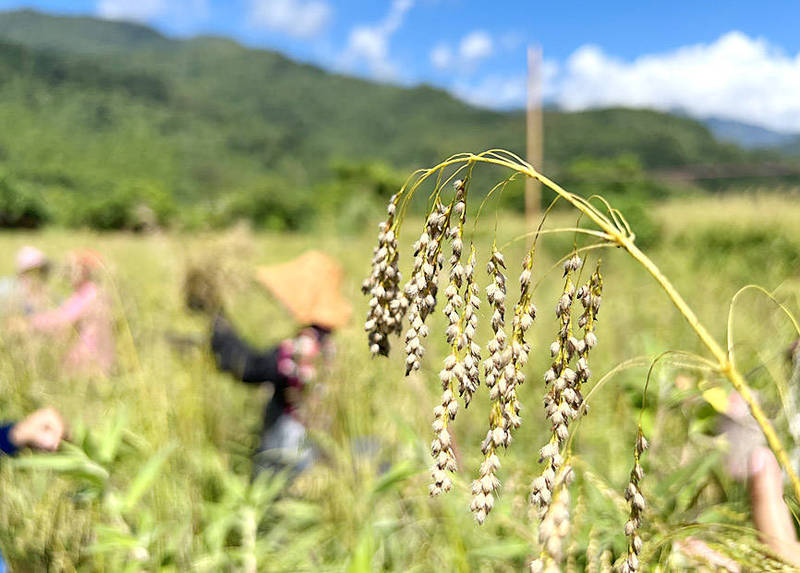《TAIPEI TIMES》Taiwan oil millet touted for its climate tolerance
By Jake Chung / Staff writer, with CNA
The government should promote the growth of Taiwanese oil millet, as the perennial grass is highly tolerant to drought and saline soil, sustainable development groups said on Thursday.
The crop is also flood-tolerant, the groups said, adding that rice could be replaced with oil millet during water shortages to help conservation efforts.
The plant used to be a staple of the Bunun people, before vanishing for half a century following the relocation of the Bunun after the 1941 Pasnanavan incident in Taitung County.
The Pasnanavan incident refers to a failed attempt by relocated Bunun to return to their mountain homes by attacking police stations of the then-Japanese colonial government.
The incident only steeled the decision of Japanese authorities in the region to complete the relocation of the Bunun of Pasnanavan to the plains.
The plant, which a young Bunun named Chiu Hsiao-cheng (邱曉徵) and his father reintroduced as a crop five years ago, was sent to Academia Sinica for analysis.
The crop was said to have the potential to be a staple, given the effects of climate change.
Moreover, oil millet had survived after being under water for four days during flooding in 2019, Chiu said.
Climate change has affected the distribution of water resources, said Ling Keng-hung (林耿弘), president of Taitung County’s Youth and Elderly Community Co-creation and Environment Protection Association.
With its high concentration of rice paddies, the first crop of each growing season in the upper fields of the Huadong Valley — the area between the Central Mountain Range and the Coastal Mountain Range, also known as the Hualien-Taitung Valley (花東縱谷) or the East Rift Valley — could be for growing oil millet or similar crops that have high economic value and do not need as much water, Ling said, adding that this would improve the conservation of water resources.
Huang Tzu-yun (黃子芸), an assistant researcher at the Taitung District Agricultural Research and Extension Station, said that the station is studying how to promote oil millet as a crop, as it has high nutritional value and is adaptable to climate change.
Academia Sinica Institute of Plant and Microbial Biology assistant researcher Hsu Tzu-fu (徐子富) said that during the most severe water shortage in half a century last year, oil millet was less affected than other crops that rely on copious amounts of water.
A perennial plant, oil millet can be harvested by scything it above the roots, with no need to reseed, Hsu said, adding that tilling is only required every three years.
Compared with rice paddies or wheat fields, which need to be tilled every 100 to 120 days, and six months respectively, oil millet fields have a much better carbon fixation rate, he said.
“We hope to work with US and Japanese academics and make a proposal to UNESCO to have oil millet considered a world cultural heritage,” he said.
“We hope that Taiwan could contribute, in some form, to help resolve potential global food supply crises,” he said.
新聞來源:TAIPEI TIMES
















